Helping first-time users to request signatures
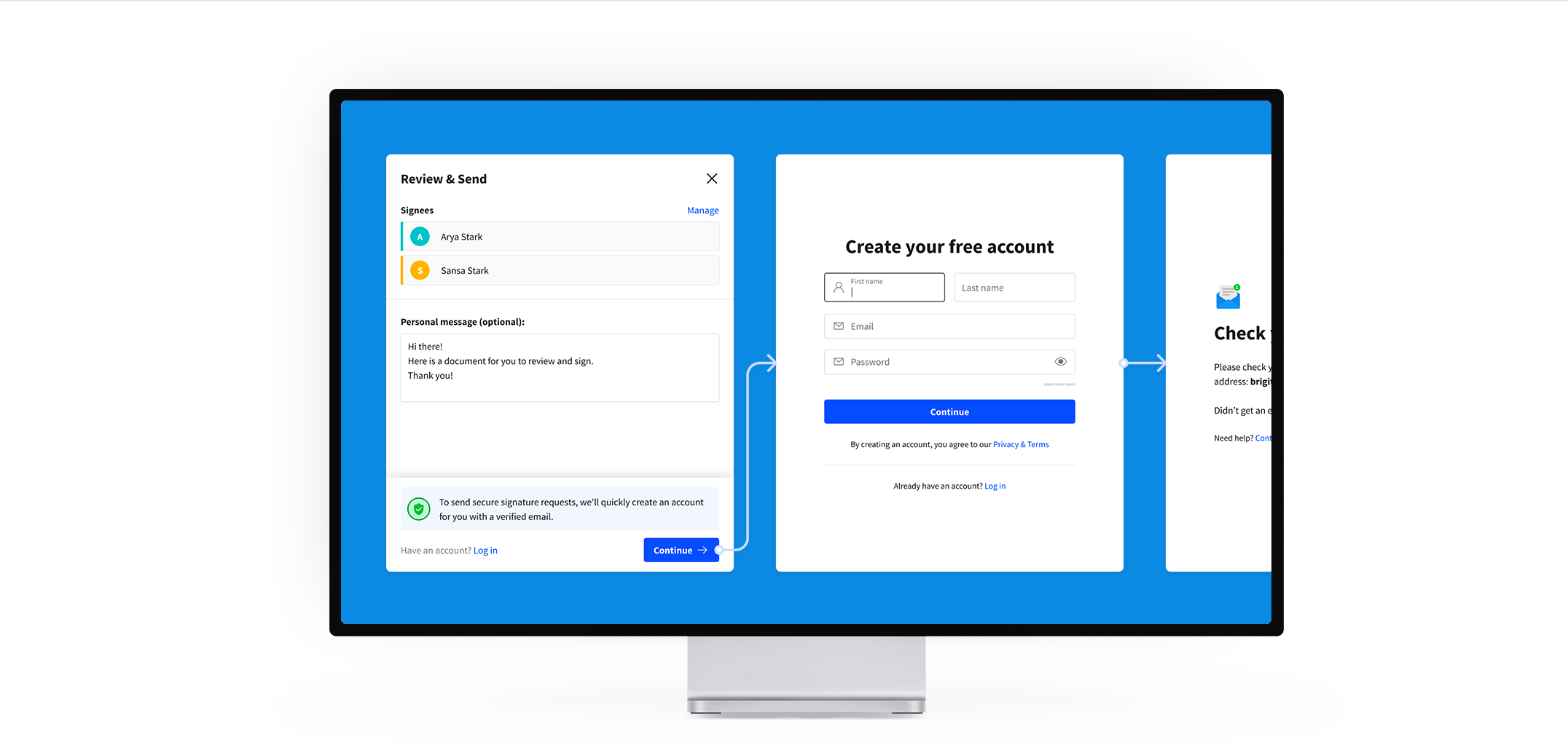
The problem
The eSign tool by Smallpdf is an electronic signature service that lets users do two main things:
- Sign PDF documents themselves ("self-sign")
- Snd documents to other people to sign ("sign request")
Something didn't seem right about the number of "sign requests" sent. While the usage metrics for "self-Sign" appeared to follow an erratic pattern towards improvement, the "sign-request" metrics were suspiciously low and steadily declining.
Gathering insights
After looking the self-sign" and "sign-request" funnels for first time users versus logged-in users, the origin of the problem started getting clear. We noticed that only about 2% sign requests from free users happened to be successful.
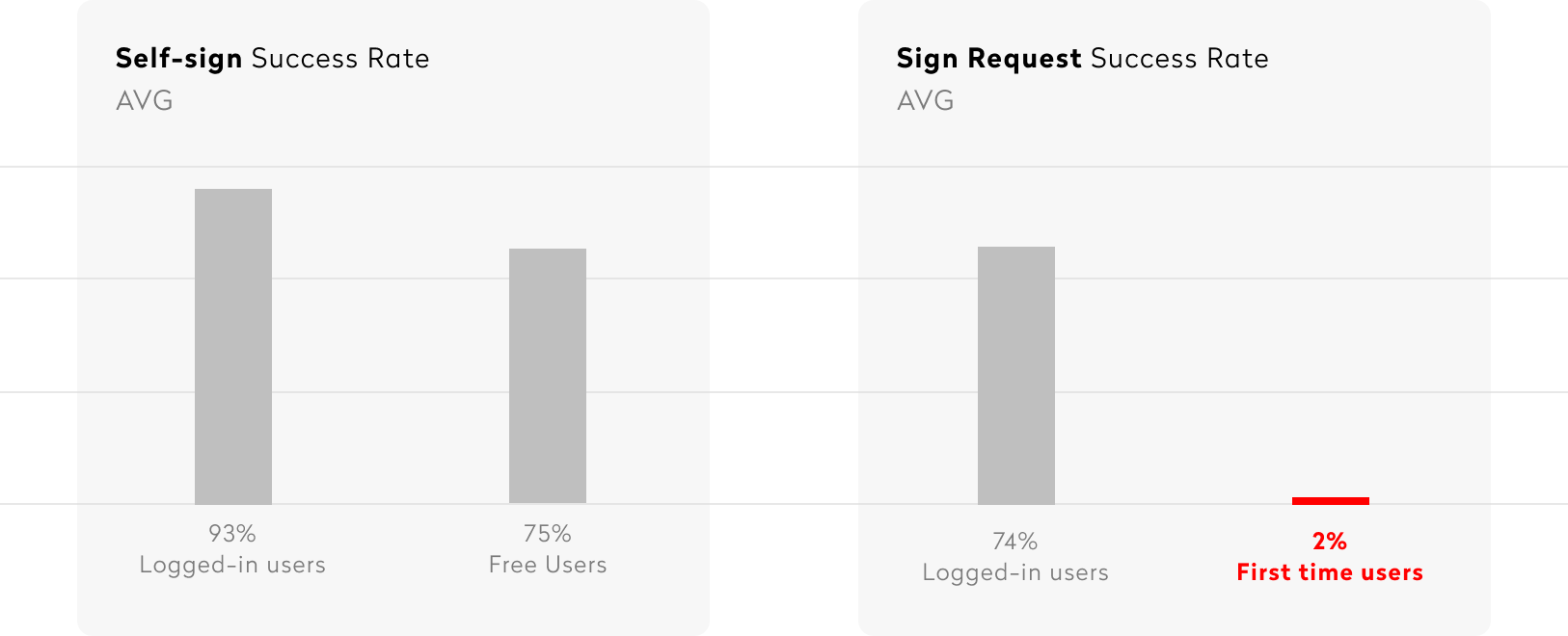
So we took a look on the product flows, was not difficult to figure out what was wrong.

🚨 The real problem was: new users donʼt get to discover Sign Request feature due to extreme friction they face, even before experiencing any value.
How was there so much friction in the first place?
The sign-up flow in Smallpdf was optimized for the following use case: a free user hit the limitation (2 tool uses per day) and needs to upgrade in order to continue using the platform.
In the eSign tool, exceptionally, in order to track the progress of a document set out for signature, an account creation became a mandatory step. But the signup flow never took into consideration this specific use case.
Concept development
💡 How might we reduce the number of steps required for new users to send sign requests?
The answer was to redesign the problematic flow resolving the main pain points:
- Postpone the sign-up step to the very end, so new users could try out the tool and be invested in it.
- Skip plan selection and payment steps.
- Skip survey on demographics.
- Avoid a dead-end on email verification flow.
Based on those guidelines, we sketched out ideas:
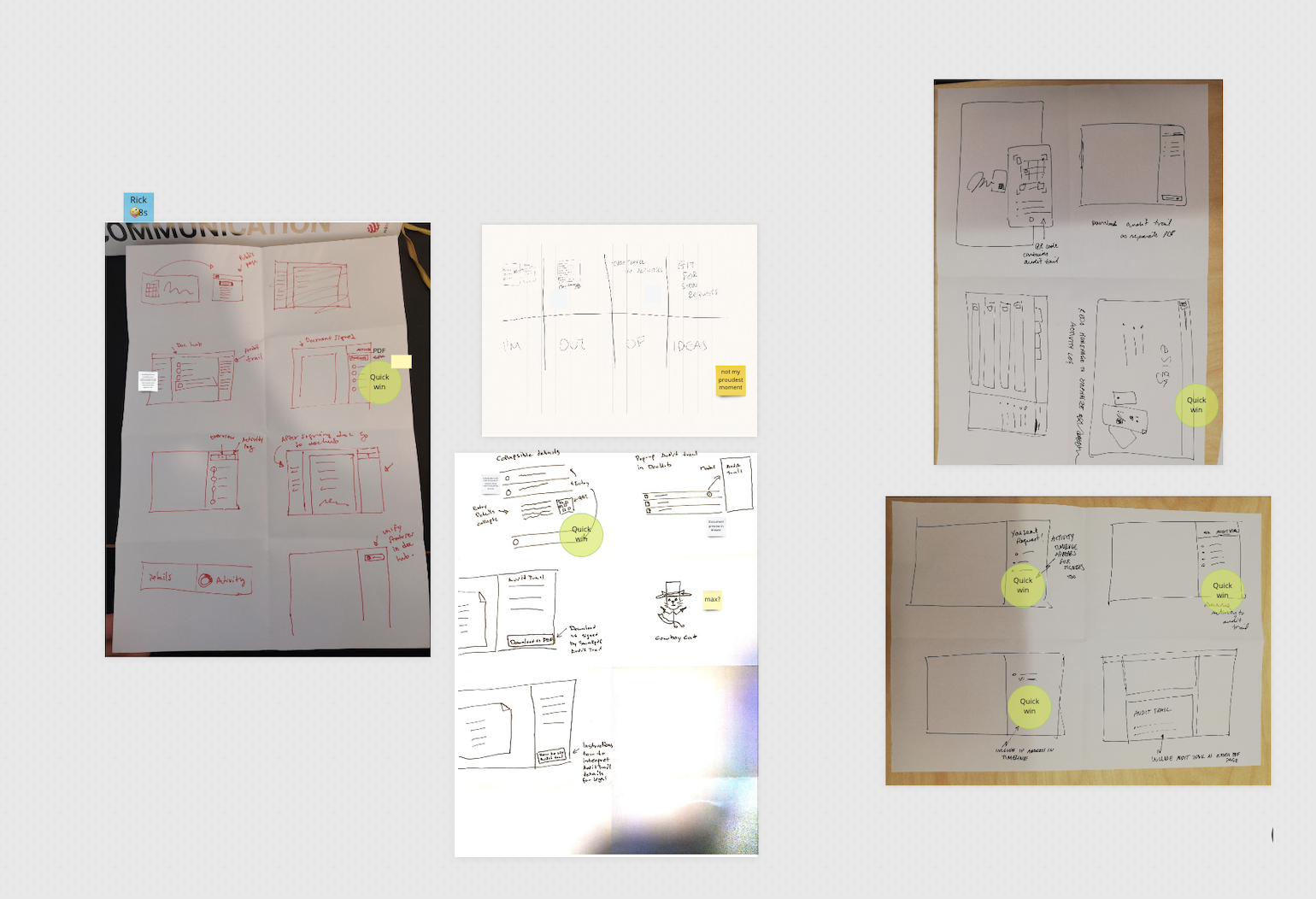
Final Designs
The final flow with the final designs and intervensions:

1) Document preparation:
We now allow the new users to invite signees and to fully prepare the document to be sent. We postpone the disruptive Sign Up to the last step. This way, consumers are more invested in the work they have already put in and can see how easy it is to use eSign.
2) Review and send:
Once users are ready to send the sign request, we prepare them to create an account. We state the reasons why (security and progress tracking).
3) Account creation:
We spare the new users from the plan selection, payment steps and the demographics survey, and keep everything in one single screen.
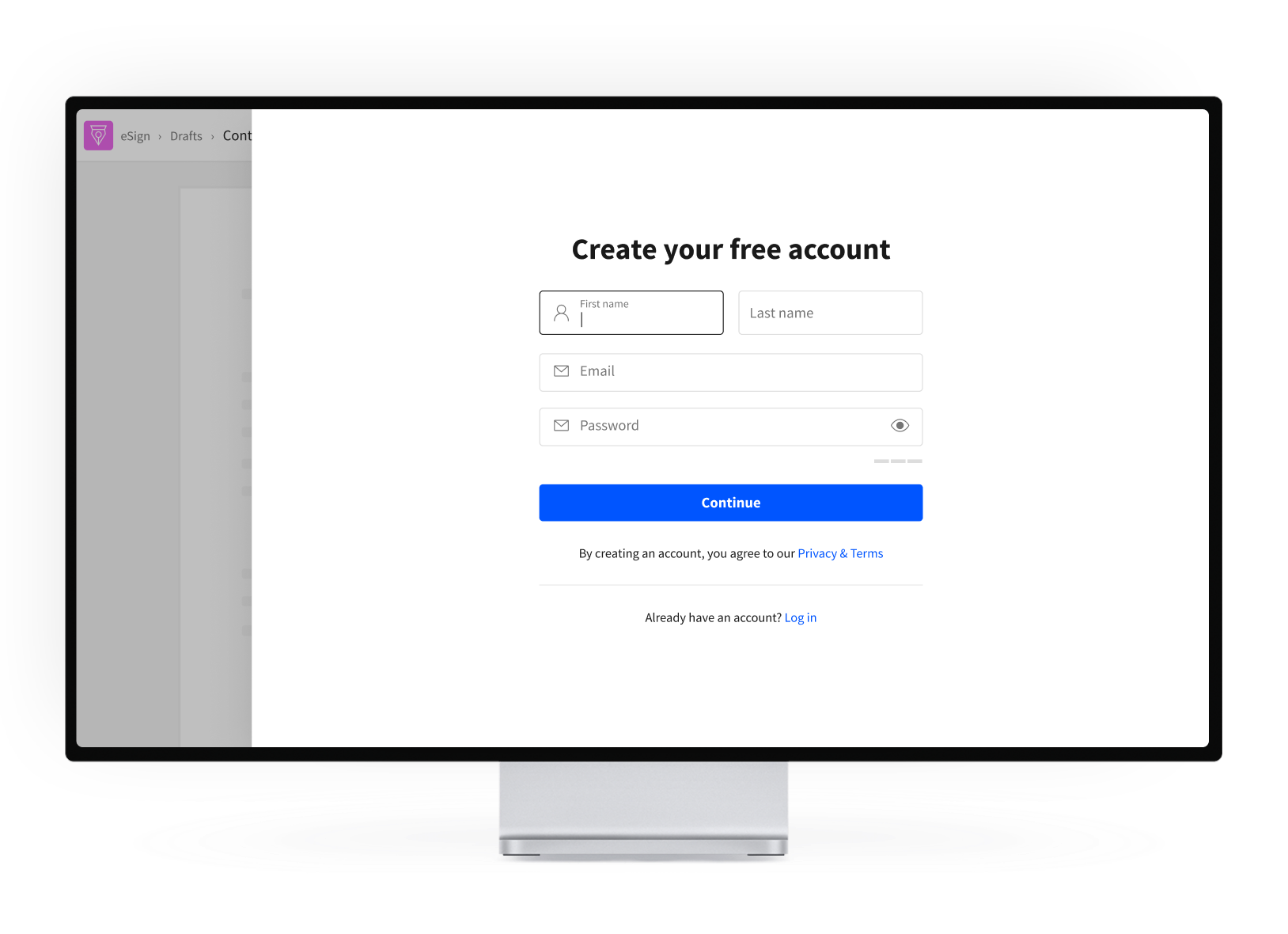
4) Email verification:
We use an inline verification code instead of a magic link to save consumers from having to switch between tabs.
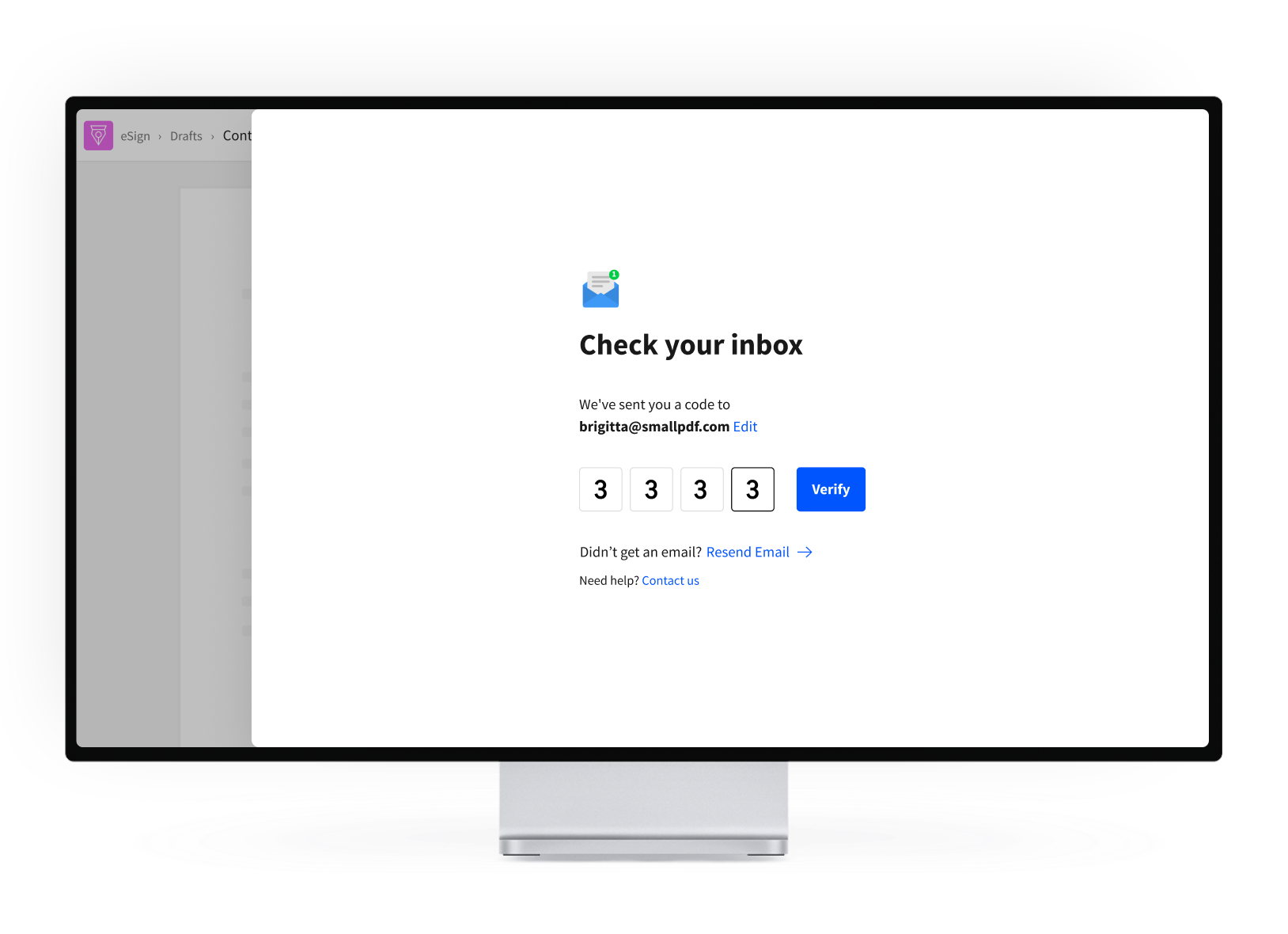
Full flow, from start to end:
Results & Learnings
We launched this solution as a AB test and the results were very positive: a 69% improvement in the overall number of sign request sent!
Also emphasizes the importance of a design guild not only in defining standards and best practices, but also in ensuring teams aren't working in silos to avoid compartmentalizing the user experience.